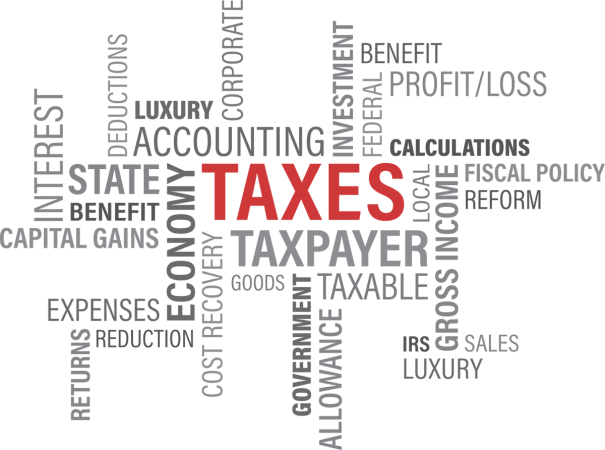
The Budget presents a government's proposed revenues and spending for a financial year that is often passed by the legislature, approved by the President and presented by the Finance Minister of the nation. It is also known as the annual financial statement of the country.
It estimates the anticipated government revenues and government expenditures for the financial year.
The practice of presenting budgets to Parliament was initiated by Sir Robert Walpole in his position as United Kingdom Chancellor of the Exchequer, in an attempt to restore the confidence of public after the chaos unleashed by the collapse of the South Sea Bubble in 1720.
The institution of the annual account of the budget evolved into practice during the first half of the 18th century and had become well established by the 1760s; George Grenville introduced the Stamp Act in his 1764 budget speech to the House of Commons of Great Britain.
Elements
The two basic elements of any budget are the revenues and expenses. In the case of the government, revenues are derived primarily from taxes. Government expenses include spending on current goods and services, which economists call government consumption; government investment expenditures such as infrastructure investment or research expenditure; and transfer payments like unemployment or retirement benefits.
Special consideration
Government budgets have economic, political and technical basis. Unlike a pure economic budget, they are not entirely designed to allocate scarce resources for the best economic use. They also have a political basis wherein different interests push and pull in an attempt to obtain benefits and avoid burdens. The technical element is the forecast of the likely levels of revenues and expenses.
Classification
Budget classification is a corner stone for budget management system. It provides a framework for both decision making and accountability.
Budgetary classification should have such qualities: comprehensiveness, unity, internal consistency.
According to IMF, there are the following classifications that are essential to any government budget:
Revenue classification (classification of revenues into various categories)
Expenditure classification
- administrative classification (classification by entity that is responsible for managing the public funds)
- economic classification (classification by type of expenditure, for example, salaries, goods and services, transfers and interest payments, capital spending)
- functional classification (classification according to the purposes and objectives of expenditure -- education, social security and housing, among others)
Other types of classification exist:
- classification by geographical location of the administrative unit
- classification beneficiaries of subsidies
- classification of sources of financing (external loans and grants)
- classification by program (subdivided by activities)
Let's have a look at the process behind budgets presented around the world:
United States federal budget
The Budget of the United States often begins as the President's proposal to the US Congress which recommends funding levels for the next fiscal year, beginning October 1 and ending on September 30 next year. The fiscal year is named for the year in which it ends. However, Congress is the body required by law to pass appropriations annually and to submit funding bills passed by both houses to the President for signature. Congressional decisions are governed by rules and legislation regarding the federal budget process. Budget committees set spending limits for the House and Senate committees and for appropriations subcommittees, which then approve individual appropriations bills to allocate funding to various federal programs.
If Congress fails to pass an annual budget, a series of appropriations bills must be passed as "stop gap" measures. After Congress approves an appropriations bill, it is sent to the President, who may sign it into law, or may veto it. A vetoed bill is sent back to Congress, which can pass it into law with a two-thirds majority in each chamber. Congress may also combine all or some appropriations bills into an omnibus reconciliation bill. In addition, the President may request and the Congress may pass supplemental appropriations bills or emergency supplemental appropriations bills.
Several government agencies provide budget data and analysis. These include the Government Accountability Office (GAO), Congressional Budget Office, the Office of Management and Budget (OMB) and the US Treasury Department.
Australian federal budget
Australia follows, to a great extent, the conventions of the Westminster system. For example, the Prime Minister must have the support of a majority in the House of Representatives, and must in any case be able to ensure the existence of no absolute majority against the government. In relation to the budget, that requires that if the House fails to pass the government's budget, even by one dollar, then the government must either resign so that a different government can be appointed or seek a parliamentary dissolution so that new general elections may be held in order to re-confirm or deny the government's mandate.
Canadian federal budget
The Budget is announced in the House of Commons by the Finance Minister, who traditionally wears new shoes while doing so. It is then voted on by the House of Commons. Budgets are a confidence measure, and if the House votes against it then the government can fall, as happened to Prime Minister Joe Clark's government in 1980. The governing party strictly enforces party discipline, usually expelling from the party any government Member of Parliament who votes against the Budget. Opposition parties almost always vote against the Budget. In cases of minority government, the government has normally had to include major concessions to one of the smaller parties to ensure passage of the Budget.
Historically the official opposition used to prepare a complete alternative budget and present this alternative to the Canadian people along with the main Budget. In recent years, opposition parties are more likely to pick only certain aspects to criticise. The Reform Party revived this practice for a time. A complete alternative Budget is today produced each year by the Canadian Centre for Policy Alternatives, a leftist think-tank.
Budget of France
The Budget of France is set after approval of the national assembly and the senate. The French Constitution provides for a maximum of 70 days between the budget being proposed to Parliament and it being approved. Article 40 of the Constitution stops the National Assembly and Senate from making any amendments to the total spending and revenue amounts proposed by the government.
Once approved by the Parliament, the government may make adjustments of up to two percent to the Budget without having to seek further parliamentary approval.
United Kingdom
The Budget is prepared by the Treasury team led by the Chancellor of the Exchequer and is presented to Parliament by the Chancellor of the Exchequer on Budget Day. It is customary for the Chancellor to stand on the steps of Number 11 Downing Street with his or her team for the media to get photographic shots of the Red Box, immediately prior to them going to the House of Commons. Once presented in the House of Commons it is debated and then voted on. Minor changes may be made, however, with the budget being written and presented by the party with the majority in the House of Commons (the Government), the Whips will ensure that is it passed as written by the Chancellor.
















